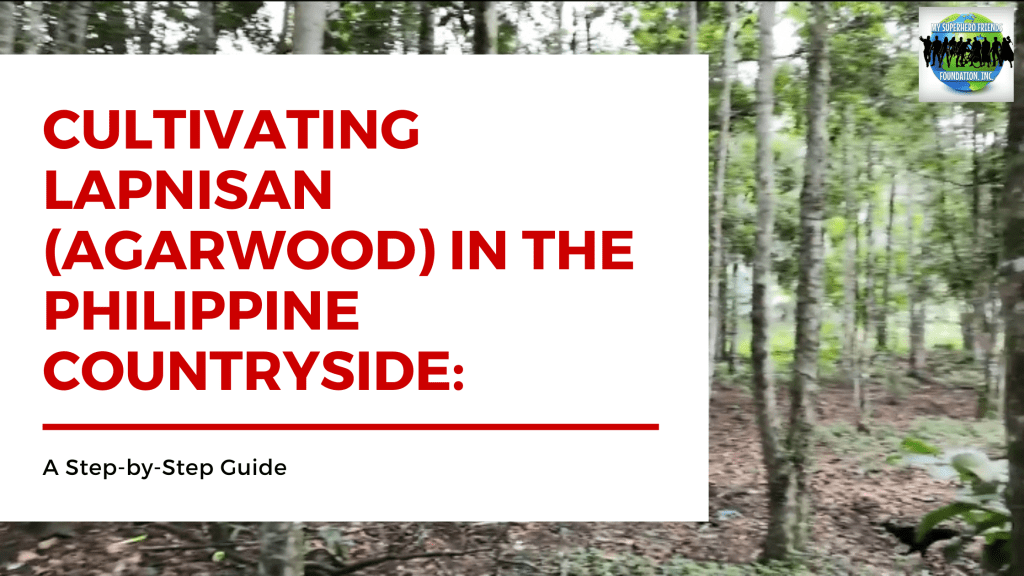
Lapnisan, also known as agarwood (Aquilaria species), is a precious tree valued for its fragrant resin, commonly used in perfumes, incense, and traditional medicine. Native to Southeast Asia, including the Philippines, cultivating lapnisan can be both a rewarding and profitable venture. This guide provides a comprehensive step-by-step process for planting and nurturing lapnisan trees in the Philippine countryside.
Step 1: Understanding Lapnisan: Before embarking on this journey, it’s essential to understand the nature of lapnisan trees:
- Species: Aquilaria species, with Aquilaria malaccensis being the most common.
- Climate: Prefers a tropical climate with high humidity and rainfall.
- Soil: Thrives in well-drained, loamy soil with good organic content.
Step 2: Selecting the Planting Site
Choosing the right site is crucial for the successful growth of lapnisan:
- Location: Find a site with partial shade and protection from strong winds. Avoid waterlogged areas.
- Soil Preparation: Test the soil pH, ideally between 5.5 to 6.5. Amend the soil with compost or organic matter to improve its fertility and drainage.
Step 3: Obtaining Quality Seedlings
Quality seedlings are vital for a healthy plantation:
- Sources: Purchase seedlings from reputable nurseries or agricultural research centers.
- Inspection: Ensure the seedlings are disease-free and have a robust root system.
Step 4: Planting the Seedlings
Planting lapnisan requires careful handling:
- Timing: Plant during the rainy season (June to October) to ensure adequate water supply.
- Spacing: Maintain a spacing of 3×3 meters between trees to allow sufficient growth space.
- Planting Method:
- Dig a hole twice the size of the root ball.
- Place the seedling in the hole, ensuring the root collar is level with the soil surface.
- Fill the hole with soil and gently firm it around the base.
- Water the seedlings thoroughly after planting.
Step 5: Nurturing the Trees
Proper care and maintenance are essential for healthy lapnisan trees:
- Watering: Keep the soil moist, especially during dry periods. Avoid overwatering to prevent root rot.
- Mulching: Apply a layer of mulch around the base to retain moisture and suppress weeds.
- Fertilization: Use organic fertilizers like compost or well-rotted manure to provide essential nutrients. Apply twice a year, during the start of the rainy and dry seasons.
- Weeding: Regularly remove weeds to prevent competition for nutrients and water.
Step 6: Pest and Disease Management
Lapnisan trees are susceptible to pests and diseases:
- Pests: Watch out for insects like caterpillars, aphids, and borers. Use organic insecticides or natural predators to control infestations.
- Diseases: Common diseases include leaf spot, root rot, and stem cankers. Maintain good sanitation and use fungicides if necessary.
Step 7: Inducing Agarwood Formation
The most valuable part of the lapnisan tree is the agarwood, formed as a response to injury or infection:
- Wounding Techniques: Create artificial wounds on the tree trunk using methods like drilling, axe cutting, or agarwood-inducing chemicals.
- Inoculation: Introduce fungal inoculants into the wounds to stimulate agarwood formation. Consult experts for the most effective inoculants and techniques.
Step 8: Harvesting and Processing
Harvesting agarwood requires patience and expertise:
- Timing: Harvest when the resin content is high, usually 5-10 years after wounding.
- Methods: Cut down the tree and section the trunk. Identify the resinous parts and separate them from the non-resinous wood.
- Processing: Clean the agarwood pieces and dry them in the sun. Further processing may involve cutting, grinding, or distillation, depending on the intended use.
Cultivating lapnisan in the Philippine countryside can be a fulfilling endeavor with the right knowledge and dedication. By following these steps, you can contribute to sustainable agarwood production and enjoy the economic benefits of this prized resource. Happy planting!
